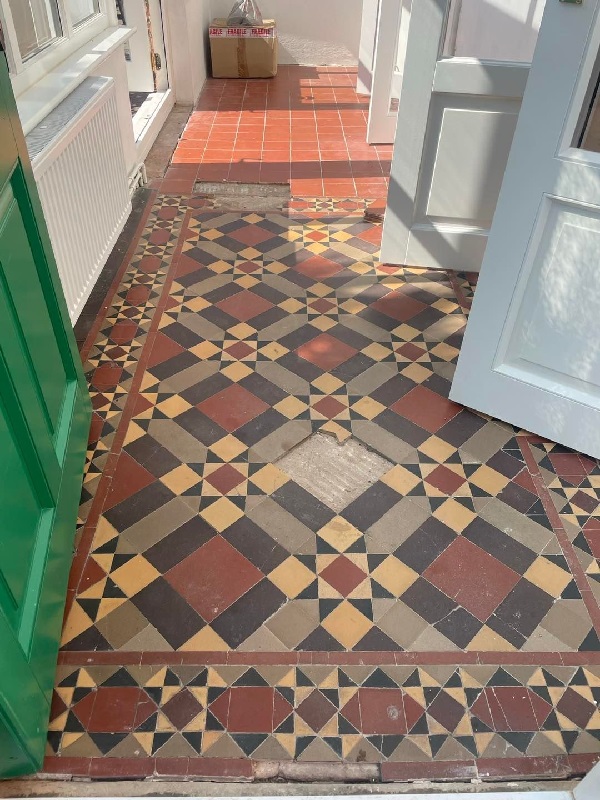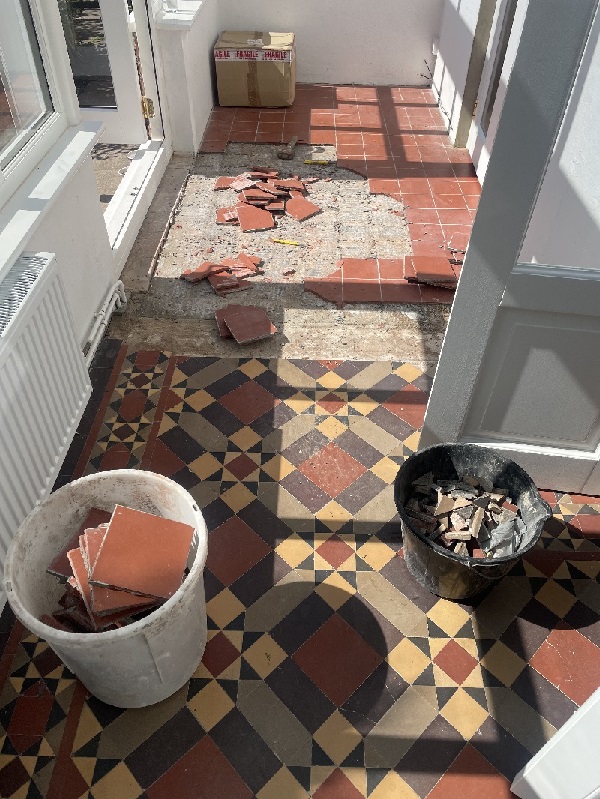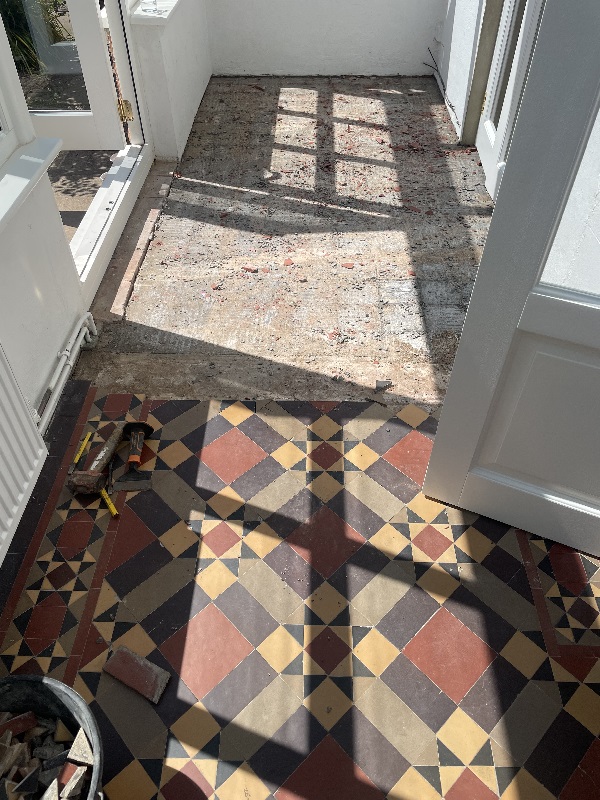I was contacted by a homeowner in Malvern who had a conservatory floor that was tiled in Quarry and Victorian tiles. They wanted a quote for removing the Red Quarry tiles and replacing with matching Victorian tiles. The Victorian floor tiles looked so much more interesting and beautiful than the Quarry so it was definitely the right thing to do.

My background is tiling so undertaking this sort of work is not a problem, my only concern was tracking down Victorian tiles that would match the original. With this in mind I popped over to the house and took all the necessary measurements and tile colour samples. I was then able to use this to research suitable matching replacements and put together a quote for the work. Happy with my price my quote was accepted and agreed a date for the work to commence.
Extending a Victorian Tiled Conservatory Floor
The first step was to remove the Quarry tiles and prepare the base to accept the new tiles making sure to get the level just right. This can be a messy and dusty job but fortunately being in a conservatory there was plenty of ventilation through the patio doors. The floor was then cleaned up ready to take the replacement tiles which as it turned out wasn’t that difficult to source as they are still very popular.

I then set out spirit and laser levels and tiled the inset of the main floor, this is meticulous work as many of the tiles had to be cut to just the right size to match the original pattern. The tiles are then laid dry onto the floor so ensure they pattern is exactly right before being fixed permanently in place with adhesive.
 |
 |
Once this central section was dry, I moved onto the borders making sure to replicate the existing border pattern along the walls, again this was meticulous work and it took 3 days before all the tiling work was complete and I was able to grout the floor.
Cleaning a Victorian Tiled Conservatory Floor
On the fourth day the tiling work was complete, and I set about giving the original Victorian floor a thorough clean starting with the application of Tile Doctor Remove and Go to remove any remnants of sealer, paint splashes from decorating and other marks. The solution was left to soak into the tile and grout for ten minutes before being worked in with a 100-grit diamond pad to really get the dirt off.
After a rinse with water the soiling was then removed with a wet vacuum. This was followed up with a 200-grit diamond pad applied only with water for lubrication and again the soiling generated was rinsed off and extracted with a wet vacuum.
The whole floor was then treated to an acid wash using Tile Doctor Acid Gel. This final step in the cleaning process removes any grout smears left over from tiling and further cleans up the tiles. After a final rinse and extraction, the floor was left to dry off overnight.
Sealing a Victorian Tiled Conservatory Floor
I returned the next day to seal the tiles checking first that the floor was dry by taking a few moisture readings with a damp tester. This confirmed the floor was dry and ready for sealing for which I used Tile Doctor X-Tra Seal which is an oil-based sealer that adds character and a subtle shine to Victorian tiles. It’s also fully breathable sealer with built in UV protect that is rated for internal and external use and so ideal for a conservatory floor.

Over the course of the five days the floor was transformed, and my customer was very happy with result and confirmed it was the right decision. For aftercare of Victorian floor tiles, I recommended the use of Tile Doctor Neutral Cleaner which is an effective yet gentle floor cleaning product that won’t degrade the sealer.
Source: Conservatory Floor Tiling and Renovation Service in Malvern Worcestershire